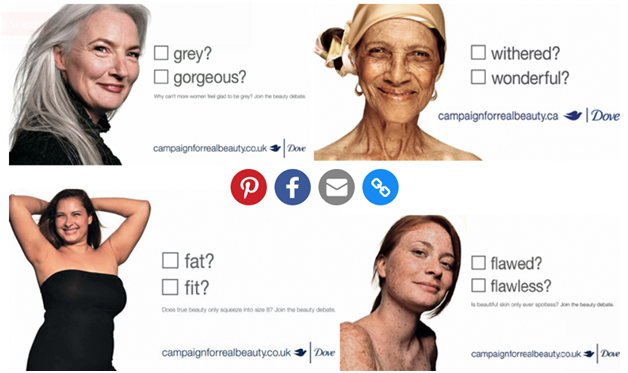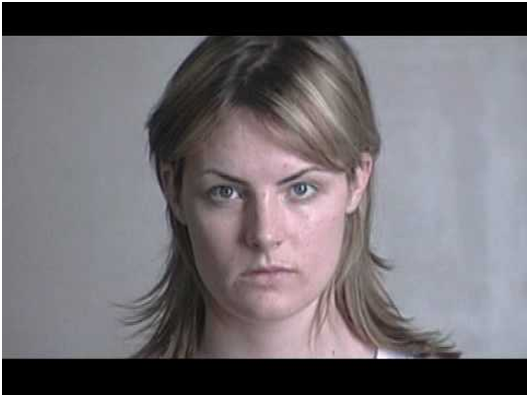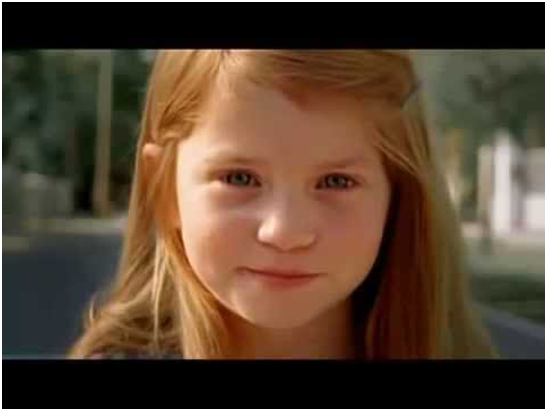Not satisfied with your own body? This soap brand has an empowering message for you! [Gorillas of Guerrilla Marketing]

How would you describe someone who is “beautiful”?
Tall and slim?
Young-looking?
Flawless skin without freckles or blemishes?
Has a perfectly aligned set of pearly white teeth?
Society sets its own standard of beauty.
This soap brand reminds people, especially women, that they are their own kind of beautiful.

Dove is an American personal care brand owned by Unilever.
It was initially launched in the market as a cleansing bar soap with a non-irritating cleanser and moisturizing component in 1957.
In the 1970s, the brand was developed into a beauty bar soap that promised women moisturized skin.
In1996, Dove was already being sold in over 80 countries.
Since then, Dove has expanded its range of products to include moisturizers, face creams, deodorants, shower gels, shampoos, and conditioners.
As a leading household brand in the personal care industry, how was Dove able to convey the message that it does not only care about its profit, but it also values its consumers?
The Real Beauty Campaign
In 2004, a global survey titled, “The Real Truth About Beauty: A Global Report” revealed that the definition of beauty among women had become inauthentic, limiting, and unattainable.
The survey stated that representations of beauty in the popular culture negatively impacted women’s self-esteem, happiness, and overall well-being. As a result, they often didn’t appreciate the beauty in themselves.
Dove launched the Real Beauty Campaign with the goal to eliminate these negative self-esteem issues and promote positive social beauty standards among women.
The brand commissioned researchers from Harvard University, the London School of Economics, and global research and analytics consultancy firm StrategyOne to examine the relationship between women and beauty.
Dove partnered with marketing communications company Ogilvy & Mather to produce a series of reality-based campaigns that feature “everyday women.”
In the same year that the global survey was conducted, Dove launched the first installment of its campaign.
Instead of professional models, the campaign team photographed women they randomly encountered in coffee shops, bookstores, grocery stores, and other public places. The women were between ages 22 and 96.
Dove ensured that the images were not altered nor airbrushed in any way, and of course, had the women’s consent.
In the ads that were placed on billboards and bus stops throughout New York, Chicago, Washington, D.C., and Los Angeles, Dove asked whether the models on the photos were:
“Fat or Fab?”
“Wrinkled or Wonderful?”
“Grey or Gorgeous?”
“Freckled or Flawless?”
Dove even asked the public to cast their votes online.

In 2005, the second and most iconic advertisement in the series was released, starring six brave women with “real bodies and real curves.”
The Dove ad directly challenged the stereotype that only thin is beautiful and at the same time, raise public awareness about the new Dove Firming Collection that includes the Intensive Firming Lotion, Intensive Firming Cream, and Firming Body Wash.

In 2006, when Spain banned overly-skinny models from its runways, Dove expanded its campaign into three notable video ads:
“Evolution” tackled issues about the beauty industry’s pursuits to change women’s appearances into something completely different for the sake of publication―from hair and makeup to photo editing softwares.

In the same way, “Onslaught” also targeted the beauty industry but in a different aspect: plastic surgery. The video ad featured an innocent little girl with a message for parents to “talk to your daughter before the beauty industry does.”

The last video, “Amy,” shows a self-conscious young girl who sees problems with her body that others can’t even see. Dove used the film as a message “sent to you by someone who thinks you’re beautiful” for all the Amys in the world.

RESULTS
After all of the installments of these campaigns were launched, Dove’s sales increased from USD 2.5 billion to over USD 4 billion as more women bought their products.
It also attracted over 1.5 million online visitors to the Real Beauty Campaign website, which further promoted Dove’s products.
The three video ads―”Evolution,” “Onslaught,” and “Amy”―received FREE advertising space on national television shows such as The Oprah Winfrey Show, The Ellen DeGeneres Show, The Today Show, The View, and CNN.
The videos also reached a combined number of 30 million views a year after they were launched.
The Real Beauty Campaign by Dove and Ogilvy & Mather even won the 2006 Grand EFFIE Award for being an effective marketing campaign that was rooted in cultural insight about women and beauty.
Dove’s campaign increased its credibility as people saw the brand as a good organization that values women of all types, sizes, shapes, and colors.
As Dove built rapport with its consumers, they were able to sell more products because of its “good nature.”
Just like Dove, you can also reach out to your target market by addressing a social issue with your brand or business.
What is an important issue that you think your brand or business can address?
Push through with it. Plan your marketing strategy well.
Make an impact and influence a positive change!
About The Dynamic Marketing Communiqué’s
“Friday: Gorillas of Guerrilla Marketing”
Jay Conrad Levinson (1984) said that Guerrilla Marketing “works because it’s simple to appreciate, easy to execute, and inexpensive.”
Guerrilla Marketing is unconventional.
Looking beyond the traditional ways of advertising, marketers, and advertisers need to spice things up in order for their brand to have campaigns that not only make an impact but also stick to their target market’s mind.
Guerrilla Marketing usually aims to have direct contact with consumers.
This type of direct contact should spark an emotional reaction that leads to consumers effectively remembering the brand.
It’s about making a big impression and making that impression last a long time (if not forever).
Guerrilla Marketing is inexpensive.
The effect of this is being able to create a buzz around the brand, and the strategy used to market it. Almost everything is passed around through word-of-mouth.
Word-of-mouth is one of the greatest outcomes and it usually doesn’t cost anything.
This is every business’ or brand’s dream!
Every Friday, we publish tips, examples, and other useful content on unconventional ways of marketing and promotion.
Learn more about how to grab your target market’s attention and make an amazing first and lasting impression without having to spend a lot of money.
Businesses don’t really need to spend much for a guerrilla campaign. You do not need a big budget to be successful. You just need creativity and a good imagination.
Hope you’ve found this week’s guerrilla marketing insight interesting and helpful.
Stay tuned for next Friday’s Gorillas of Guerrilla!
Cheers,
Kyle Yu
Head of Marketing
Valens Dynamic Marketing Capabilities
Powered by Valens Research
www.valens-research.com
This content is used with permission from The I Institute and The Business Builder Daily.
View All



